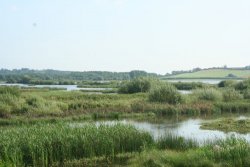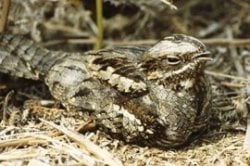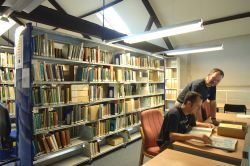Protecting the best birdwatching sites
Fieldwork for the 1968–72 Breeding Atlas had taken birdwatchers to every part of the UK (and Ireland) and the Ornithological Sites Register project, which ran from 1973 to 1977, gave them a chance to highlight 'good' sites, places that were important on at least a local scale. A list of about 4000 sites, including artificial sites such as gravel workings, clay pits and sewage works, was submitted in 1978 to the Nature Conservancy Council and Royal Society for the Protection of Birds. Many have since been recognised as Sites of Special Scientific Interest or designated as Local Nature Reserves.
Waders to the fore
The 1970s were great years for wader research, with massive swirling flocks of Dunlin on estuaries and keen volunteers trying to establish migration routes and then follow birds to Africa and Greenland. Having been set up by the BTO, the Wader Study Group fledged, encouraging projects such as the WSG/BTO 1984 West Coast Spring Passage Project, in which coordinated catches and counts were made at a range of estuaries, to look at turn-over of birds heading for Iceland, Greenland and Canada. In the next winter there was the first of three large-scale Winter Shorebird Counts, to find the waders not on estuaries. This is all important information when looking at new proposals for wind-turbines, barrages and sub-tidal seaweed harvesting.
Winter Atlas
It is a lot harder to count birds in the winter than it is in the breeding season, when they are tied to their breeding territories, active and vocal. The first winter atlas, which ran from 1981 to 1984 therefore presented many challenges, especially to those who tried to interpret the maps for species such as Lapwing, thrushes and geese, many of which move around in response to depleted food supplies or cold weather. The UK is really important to wintering birds, such as geese from Greenland, thrushes from Scandinavia and wildfowl from Russia, but the full value of the first winter atlas work will only be revealed when we see the change maps in Bird Atlas 2007–11.
BTO Species
When encouraging birdwatchers to collect information for the recent Atlas, we used the phrase ‘any bird, anywhere, anytime’ which could almost be a BTO mantra – even Woodpigeons are worth counting. There are a few special BTO species, as reflected in the repeat surveys that took place in the period 1973–93, including species such as Little Ringed Plover, Great Crested Grebe, Rook, Mute Swan, Barn Owl, Nightjar, Lapwing, Nightingale and Peregrine. Generally, these are species that are too common to be considered as rare and too scarce or patchily distributed to be picked up in the CBC or Breeding Bird Survey. The other species we should have been counting is House Sparrows but hindsight is a wonderful thing.
Second Breeding Atlas
The first breeding atlas had focussed on presence and breeding evidence but the second project which ran from 1988 to 1991 was more ambitious; volunteers were asked to make timed counts as they walked around their assigned tetrads. These data not only allowed the organisers to identify the hot-spots for each species – Swallows in East Anglia, for instance – but they would also provide a bench-mark for future changes – such as major losses of Swallows from East Anglia. There were many messages to take from the New Atlas of Breeding Birds but the key one was the range losses for several of our farmland birds, particularly buntings.
Bursting out of Tring
With a boom in work relating to waders, impact assessments for developers and the urgent need for more research into farmland bird declines, BTO’s staff had grown rapidly. It was time to leave Beech Grove in Tring, BTO’s home for 28 years, and to move to The Nunnery in Thetford, conveniently situated in the heart of agricultural East Anglia. There were not sufficient funds to finish the building work in one go but there was enough space for the period 1991 to 2006, when the last phase of the development was completed, including the Chris Mead Library.
The next two decades: 1993-2013>>



